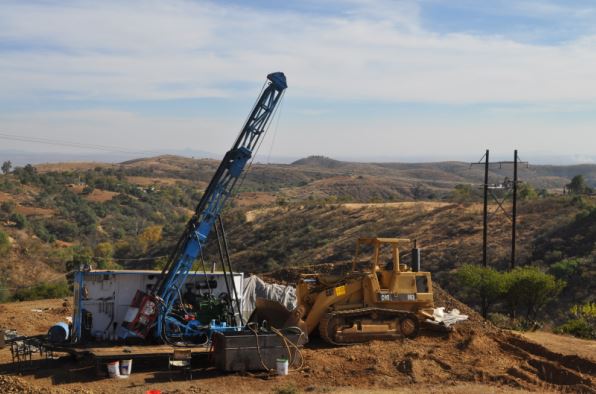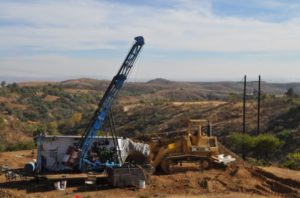PDAC sees growing momentum in mineral exploration space

By Peter Kennedy
 After some tough times, the prospects look brighter for Canada’s mineral exploration and development sector.
After some tough times, the prospects look brighter for Canada’s mineral exploration and development sector.
That’s the conclusion of a new report that was compiled by the Prospectors and Developers Association of Canada (PDAC) in collaboration with Oreninc, a Toronto-based data provider.
Titled State of Mineral Finance 2018: Gaining Momentum, the report says 2016 and 2017 were characterized by rising commodity prices that sparked increased financing opportunities and exploration spending, both in Canada and globally.
After a sharp decreased of 66% between 2013 and 2016, global exploration spending increased to US$7.95 billion in 2017, up 14.5% from US$6.95 billion in 2016.
In Canada, exploration spending jumped to $2.1 billion in 2017, up from $1.63 billion the previous year, according to preliminary estimates by Natural Resources Canada.
However, the report comes with a warning. It says global exploration spending, despite the increase in 2017, is still a long way short of the U$20.5 billion level reached in 2012. It reveals that improvements in financing and exploration activity have not spread evenly across the mineral industry.
While the value of equity financing in Canada for projects targeting minerals associated with battery technology grew 200% in 2017, the same fund flow for both precious and base metals fell by 12% and 11%.
More worrisome, from the point of view of PDAC, is the finding that the share of global exploration expenditures spent on grassroots exploration decreased from 38.2% in 2008 to 27.4% in 2017. This decline is a concern because the decline in grassroots exploration reduces the probability of discovering new deposits – and the lack of new discoveries will impact the number of future mines.
Still, in an interview, PDAC President Glenn Mullan said he is pleased to see that when it comes to attracting exploration spending, Canada continues to hold its own against key competitors like Australia.
Canada and Australia are the two leading countries in terms of funds spent on exploration. They attracted 13.8% and 13.6% of the global expenditures in 2017.
And after the depths of three years ago, Mullan said he is pleased to see more robust financings coming from the TSX Venture Exchange, a development that points to a more healthy state of affairs in the key junior exploration sector. In 2017, equity raises by junior companies listed on the TSXV increased by 18% compared to 2016, whilst the CSE reported a 123% increase in funds raised.
“We have seen a key part of our membership compete not just flow-through financings, but also more conventional financings in the past 12 months. That is a significant departure from where we were in 2014 and 2015,” he said.
Broadly speaking, the improving picture is attributed to rising commodity prices, stemming from improving economic activity in the China and the United States.
Commodity prices peaked in 2011-2012 after a “super cycle” that began in the early 2000s.
Following the 2008 global financial crisis, and during the recession in Europe and the U.S., demand for commodities was primarily supported by continuous double digit growth in China’s economy.
However, China’s growth slowed sharply in 2012, leading to a decline in the demand for many commodities until 2016 when China’s growth outlook improved and expectations for increased infrastructure spending in the United States led to commodity price appreciation.
The price of zinc, for example, recently surpassed its 2011 peak by nearly 30%. Lead has also rebounded almost to 2011 levels. However, despite a significant increase in 2017, copper is still trading far below its historical peak.
Expansion of the Electric Vehicle Market
 An aspect that significantly supported the price of several metals has been expansion of the Electric Vehicle (EV) market. Significant growth of electric vehicle production since 2010 has resulted in increased demand for certain metals such as cobalt, lithium, and vanadium. All three are essential components of electric batteries and other components of electric vehicles.
For example, the price of lithium, which ranged from US$4,000 to US$5,000 per tonne for the bulk of 2011 to 2015, increased in January 2016 to US$7,250 per tonne and since then has more than doubled to reach US$14,750 in 2017.
The increase in cobalt price has been even more dramatic with prices increasing from US$24,300 per tonne at the beginning of 2016 to SU$75,500 at the end of 2017.
Some key findings of the report are as follows:
Global equity financing peaked in 2011 at US$53 billion and fell sharply to reach US$24 billion in 2013. Global equity financing has subsequently stabilized but with a moderate decreasing trend, declining from US$37 billion in 2014 to US$27 billion in 2016 and slightly improving to US$29 billion in 2017.
The flow-through share regime continues to be a critical source of exploration financing in Canada. From 2011 to 2017, funds raised in Canada for domestic exploration via the flow-through share financing averaged 68% of the total funds generated.
The report shows that 72% of funds raised in 2017 targeted five key commodities. Gold leads the list by far at 51%, followed by copper, silver, uranium and lithium at 8.3%, 5.3%, 4.2% and 3.2% respectively.
Gold was the most sought after commodity in Canada and around the world, significantly exceeding other commodities with shares of 50.9% of global expenditures and 61.5% in Canada. Globally, expenditures targeting copper (20.7%) and zinc (6.2%) ranked second and third, while uranium (10.7%) and nickel (5.7%) ranked second and third in Canada.
The average amount per transaction on the TSXV increased to $2.8 million in 2017, a 26.3% increase over the $2.2 million average in 2016. Yet it remained below the 2011 average of $3.6 million.
The report does not address the issue of how the mineral sector is being affected the marijuana and cryptocurrency sectors, which compete with the mining industry for high-risk venture capital. PDAC may take a closer look at that situation in a future report.
This time around, PDAC chose to offer a window on the financing landscape in the mining sector without making comparisons to other sectors.
